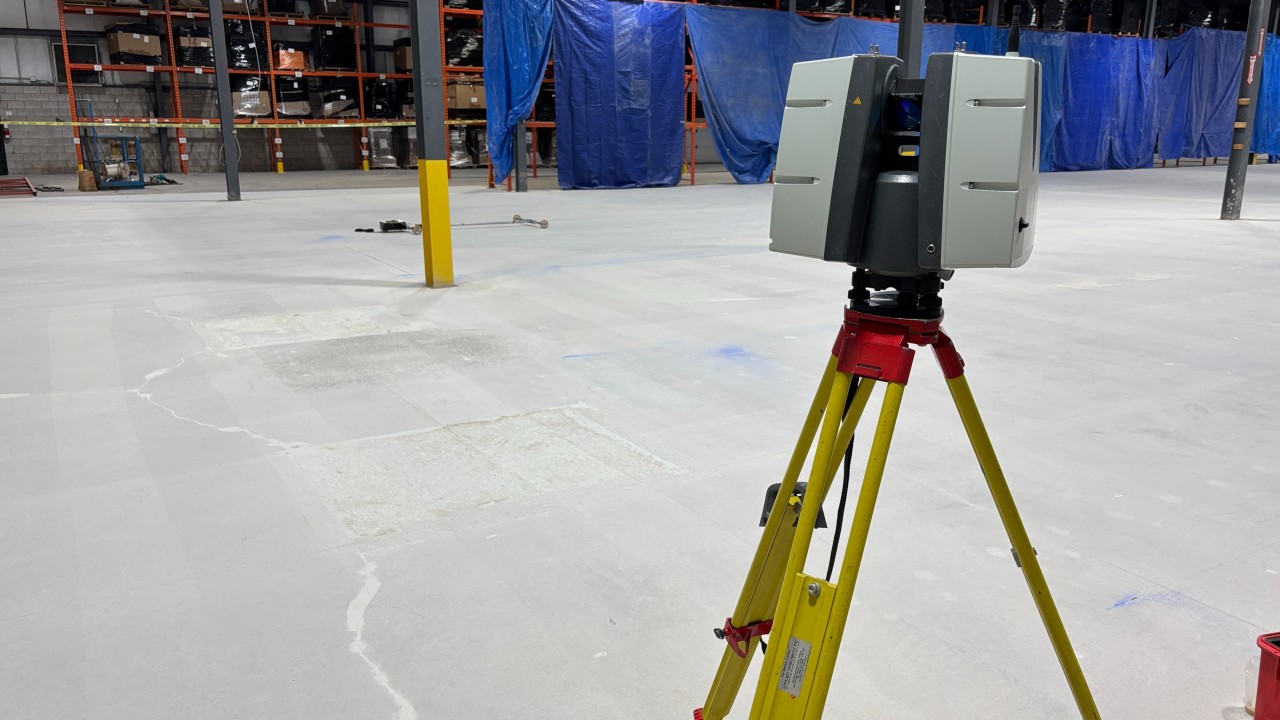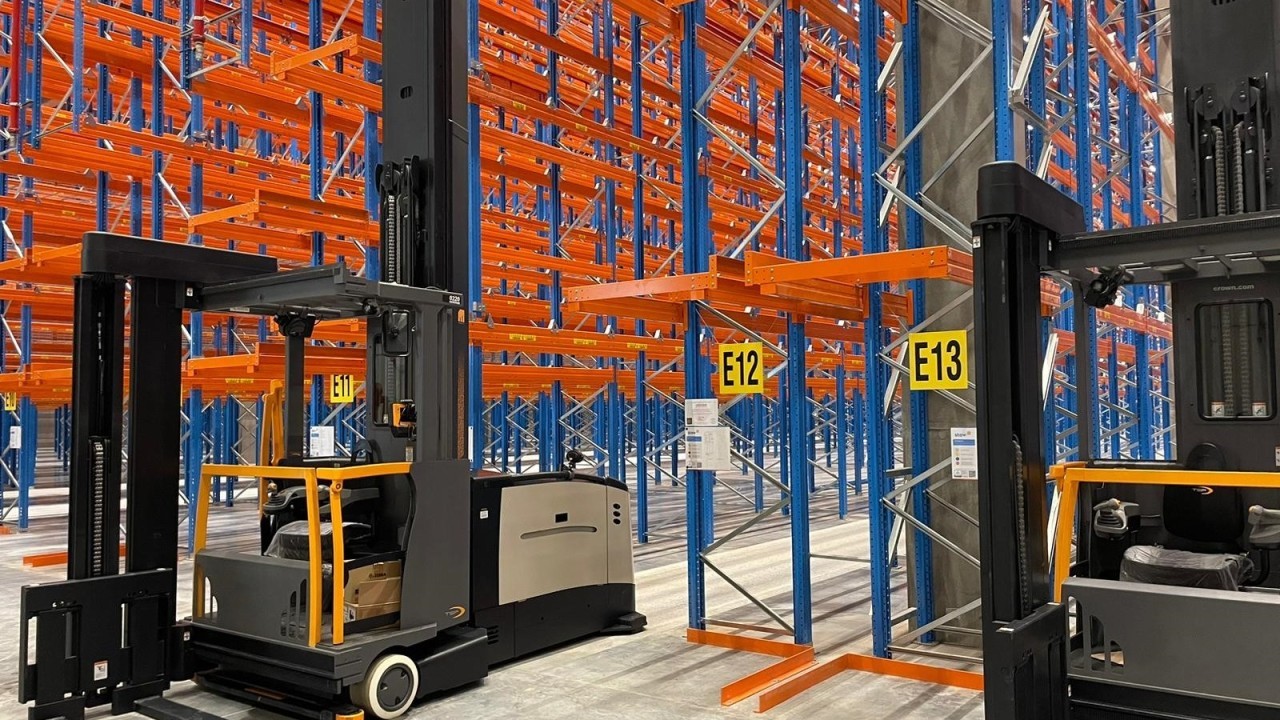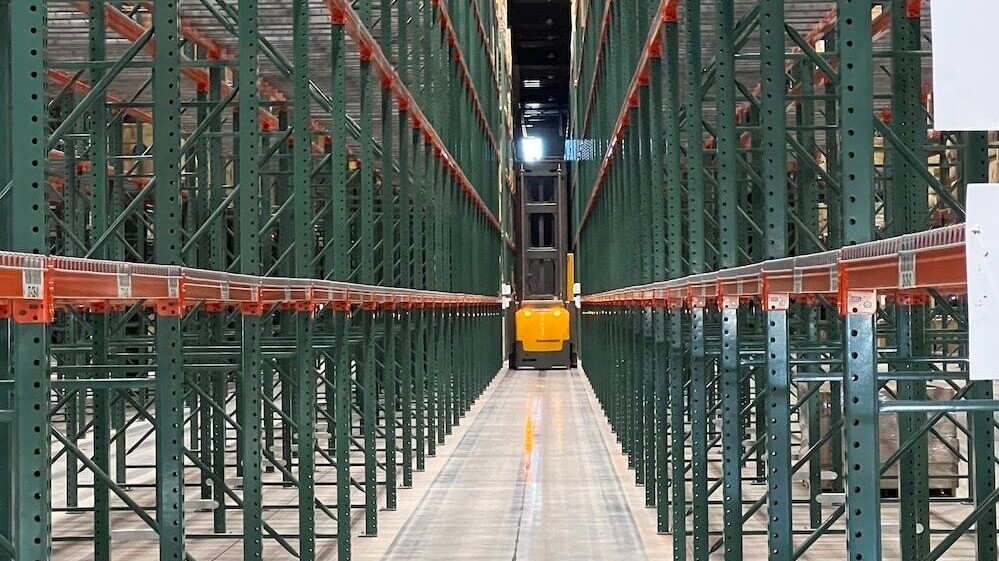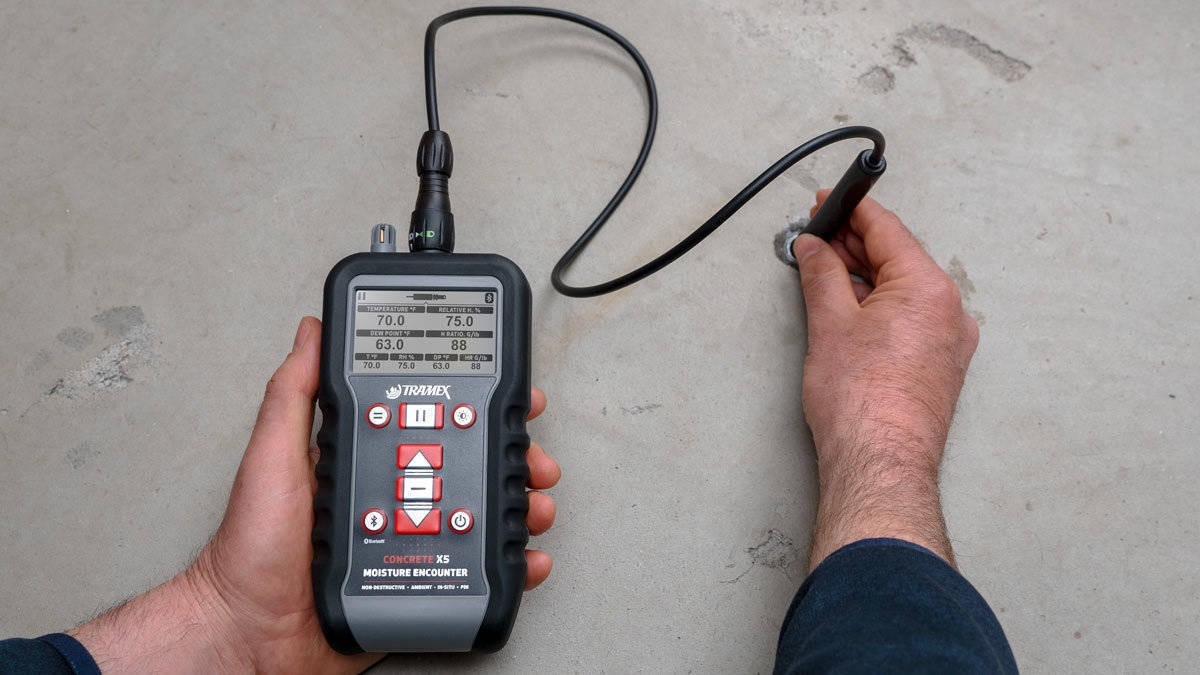As logistics operations transition toward high-density automation, the warehouse floor becomes more than just a slab — it’s the infrastructure backbone of your robotic system. We help logistics professionals and automation integrators across Canada retrofit, upgrade, and certify floors to match the strict technical standards required for high-performance robotics.
Let’s dive into why flooring is so important and what specifications really matter.
Flatness & Levelness – Tolerance-Driven Performance
Required tolerances:
- AutoStore™ grid: Max ±10 mm deviation across grid surface
- AMRs (Autonomous Mobile Robots): Typically require FF50/FL30 or better
- ACRs (Autonomous Case Robots) and HAI Robotics: Require FF60+ and maximum local deviation <2 mm over 1 m span
Irregularities as small as 2 mm over short distances can cause robot tilt, misalignment of lifts, or failed bin retrieval.
We use high-precision equipment:
- Leica P40/50 and RTC360 for 3D scanning at ±1 mm accuracy
- LevelTech profiler to analyze aisle deviations under TR34 Appendix C and ASTM E1155
- Robotic Alphaplan FloorProfiler to survey concrete floors as per VDMA, DIN 18202 Group 3, DIN 18202 Group 4, DIN 15185 T1, TR34, FEM 10.2.14-1, EN 15620, AutoStore, ABRfl, ASTM, F-min.
Every upgrade is backed by a before-and-after compliance report, which shows deviation mapping and certification to tolerances such as TR34 DM1/FM2 or Fmin 75–100, depending on the robot type.
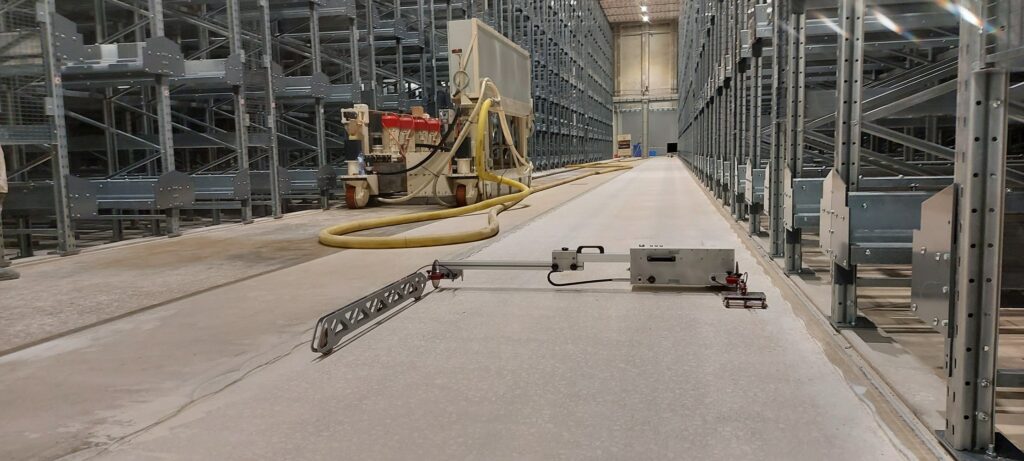
Floor Joints – Managing Instability
Technical challenges: Joints wider than 6 mm or vertical steps >1 mm can cause excessive jolt for AMRs and ACRs
Curling slabs can cause AutoStore™ rails to misalign by more than 5 mm, disabling bin delivery
In both new builds and retrofits, Applied deploys:
- Rebuilding of joints using synthetic mortars with aggregates
- Permaban Signature AR armoured joint systems for high-traffic zones
- Stabilization of slab curl using slab stitching and polyurethane foam injection under voided sections
We also recommend jointless floor designs (panels up to 30 m x 30 m with steel fiber reinforcement) where possible in new construction, fully integrated with robotic path layouts.
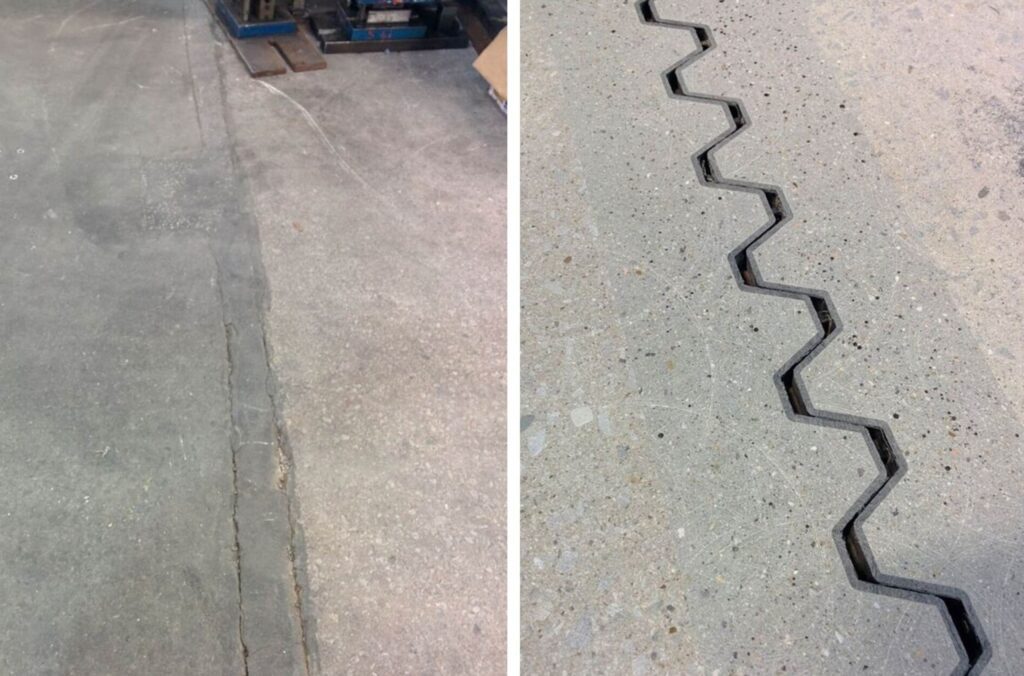
Surface Finish & Traction – Calibrated for Robotics
Key performance metrics: COF (Coefficient of Friction) for robotic wheels: typically between 0.57 – 0.90
Surface profile (CSP): Optimal between CSP 1.5 – 2.5 for traction and battery efficiency. Excessively polished surfaces (>gloss level 50 GU @ 60°) may reduce traction and interfere with path correction. We evaluate floor texture using: Gloss meters, CSP tester, and drag-slip testers.
Reflectivity – Visual Navigation and LiDAR Accuracy
Robotic vision systems (e.g., HAI Robotics, Geek+, Locus) rely on cameras and LiDAR:
- Overly reflective surfaces (>70 GU) may cause sensor ghosting
- Overly matte surfaces (<20 GU) can degrade edge detection or pathfinding algorithms
Uniform reflectivity across zones is more important than an absolute value
We provide:
- Surface reflectivity reports (Gloss Units at 20°/60° angles)
- Microtexture tuning using diamond polishing stages or matte coatings
- Anti-glare finishes to reduce direct light reflection under overhead LED strips
Our solutions ensure AMRs can read QR codes, LiDAR references, and optical cues with precision in all lighting conditions.
Durability Under Robotic Load – Designing for Repetition
Traffic stats in robotic warehouses:
- Up to 100,000 robot passes/day in grid or pick zones
- Wheel loads of 1.5–2.5 kN with small polyurethane or rubber wheels, generating high point pressure
- Repetitive loading on concrete can lead to micro-spalling, especially near rack legs and pick zones
In retrofit projects, we reinforce exposed aggregates or soft top layers with densifiers and lithium hardeners for lasting performance.
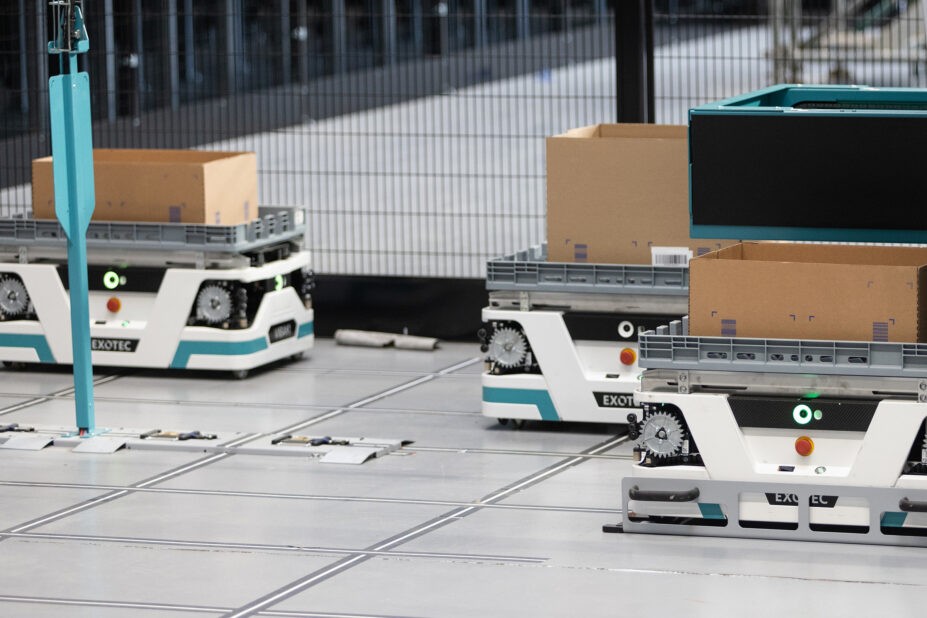
Automation Starts from the Ground Up
Whether you’re planning to roll out:
- AutoStore™ or Exotec cube storage
- AMR fleets from Geek+, Locus, or OTTO
- Custom AS/RS, VNA racking, or shuttle systems
…your floor is the enabler of peak system performance.
At Applied, we partner with both robotic integrators and end-users to engineer floors that meet the most demanding tolerances in the industry. From scanning and surveys to installation and certification, we make your floor automation-ready.

